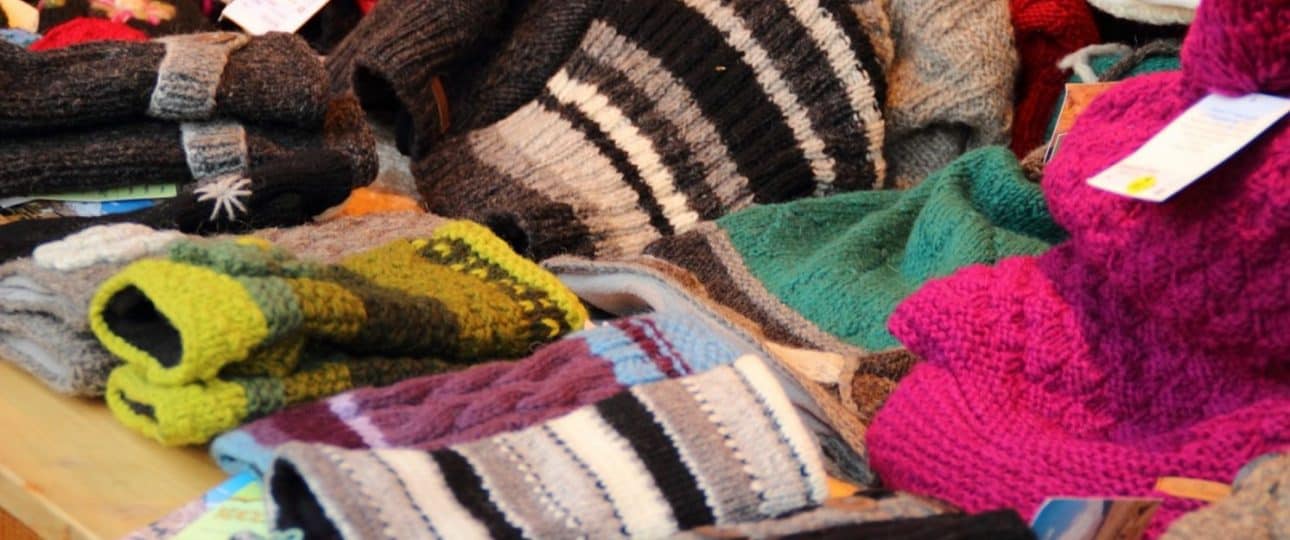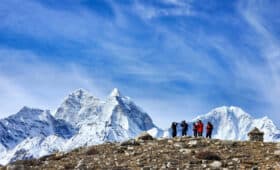Last September I went to Annapurna Base Camp trek all prepared in my down jackets and warm trousers thinking that the trail will be cold because of the altitude. But, to my surprise, it was much hot. As I wasn’t prepared with what to wear while trekking in Nepal, I had the most unpleasant time with my inappropriate dress specially in the lower altitude of the trail.
After going through detailed information I have provided in this article, I am confident that readers will have a comprehensive guide on what to wear while trekking in Nepal and will be better prepared for their adventures in Nepal.
Trekking is the best way to explore and understand the language of the mountains. Watching the breathtaking view of various Himalayan peaks including Mt. Everest is a common dream of people around the world.
And, for this pleasant time, you must first feel comfortable. That too in proper clothing.
Nepal is visited mostly for trekking purposes. Mostly because of mountains like Mt Annapurna and Mount Everest, the roof of the world. However, Nepal has many other popular trekking trails and passes too.
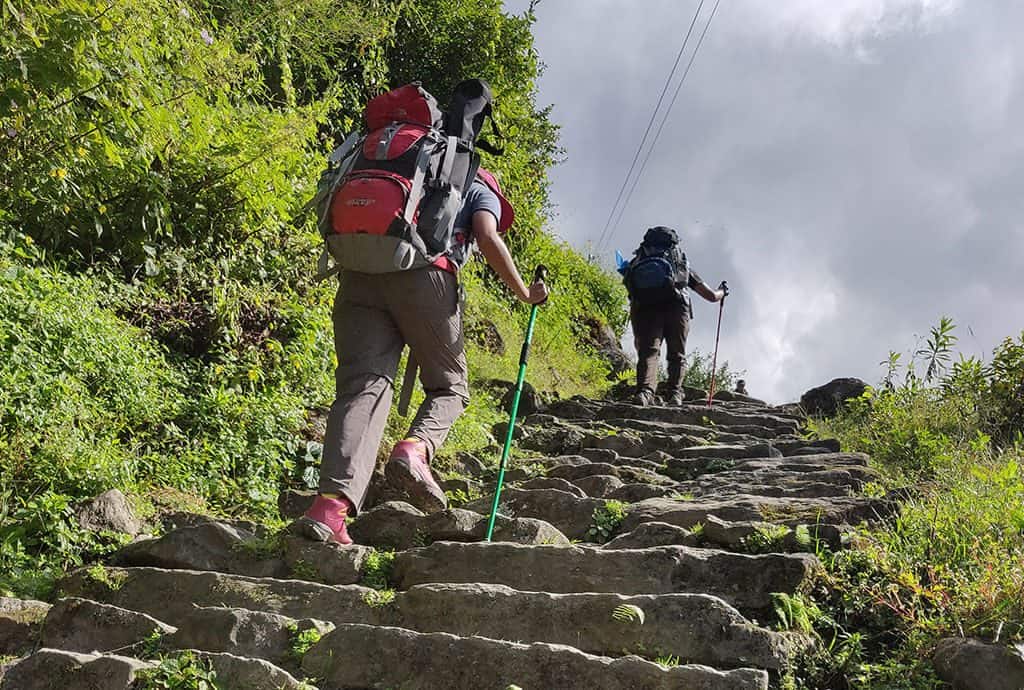
Everest Base Camp trek, Everest Panorama, Annapurna Base Camp, Annapurna Circuit, Ghorepani Poon Hill trek, Langtang Valley and Manaslu Circuit Trek are some popular trek trails of Nepal. Hiking through the villages and homestays are also very popular in Nepal.
Trekking means thrill in the adventure. A trekker should always have a detailed information on the trekking routes. You should know about the altitude, weather, and equipment required for trekking.
You should pack your backpack accordingly. Many people carry lots of useless equipment and forget the necessary ones.
And this happens, often!
Thus, gearing up with necessary materials for trekking is very important. If you are planning to visit Nepal very soon for trekking, you should be well prepared with right things to wear.
But, the most important gear you need is proper clothing or wear for the trek. Many of the first timers are always confused about what to wear while trekking in Nepal. Is there anything particular to be considered?
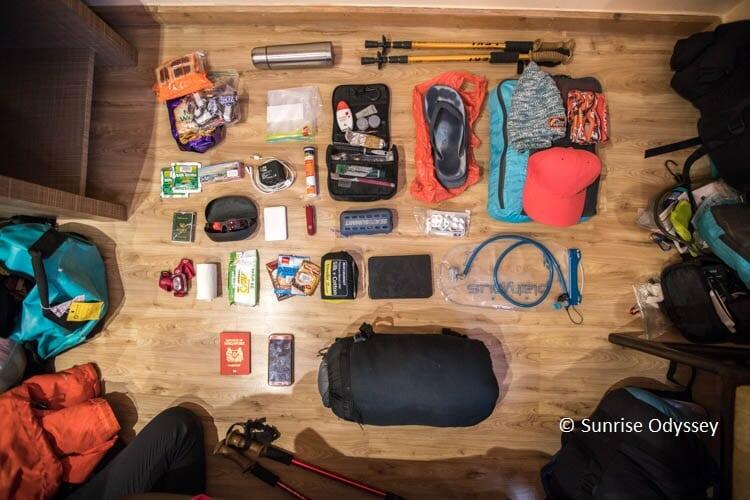
Table of Contents
Ideas for What to Wear While Trekking in Nepal
What cloth people wear develops a kind of confidence and stamina in them. It eases your journey until you reach the next destination.
Here are some guidelines for some important trek wears:
Clothing
You do not need to pack lots of clothes unless you are planning to do a high-altitude trekking. All you need to pack is some comfortable clothing that you can carry easily. You will have a porter who will carry your luggage that weighs up to 15 kilograms.
First few days of the trekking may not be too cold if you trek in summer. Shirts with shorts will keep you comfortable during the daytime. However, mornings and nights are colder.
During your trek, you will not decide what to wear; the weather will do that for you.
The temperature may rise or fall all of sudden. You should always be aware that the weather might change drastically. You should thus, be prepared for it. So, we would always recommend wearing clothes in layers.
Comfort should always be your first priority while packing for your trekking. Trekking through ups and downs, bumpy roads, high altitude, and cold weather with uncomfortable clothes will give you the worst experience ever.
We would suggest you carry a windcheater or a softshell jacket. It will protect you from strong winds in high altitude and cold weather. It will keep you warm too.
In sunny days, you can wear only wind cheater instead of jackets. You should take your clothes depending on the days of your trek. If you are trekking for longer days, washing would be the best option.
You can also carry a waterproof jacket and waterproof trousers. The weather changes dramatically in higher altitudes and you never know when you might need them.
It is always a smart idea to carry clothes that are light and easy to dry. You can get wet due to rain, stream, river or even sweat during the trek.
Wet clothes are heavier and carrying wet clothes during trek will be difficult. So, carrying clothes that dries easily is always the best option.
You will need two pairs of trekking trousers with full sleeves trekking shirts. When the temperature is extremely low, be prepared to keep yourself warm. You will need warmer options.
After all, trekking is all about walking all the way up and back again. We would also recommend you not to carry cotton clothes as cotton gets very sweaty. You will have to carry woolen shirts.
So, they keep you warm in higher regions. Thick woolen sweaters outside will keep you warm.
If you are a female, we suggest you carry tank tops with a built-in sports bra. Trekking in a skirt is also preferable. You would need warm leggings or trousers underneath.
Carrying yoga pants for nights would be better. You can also bring thermal wears for the nights. For camping trekking, you can wear trousers.
You will be walking across rivers; you may need a swimming costume sometimes. Or convertible trousers can also come in handy.
You can use a woolen scarf for your neck, it can also be used for your head. It will protect you from cold. You can buy quality woolen scarves in Nepal at a reasonable price.
Want more information? Send us your query, and our experts will get back to you within 24 hrs.
Footwear
Socks are always an important part of a travel. For the trek, you should be very careful regarding your selection of socks. You need to have a good quality of socks.
You need to protect your feet in an absolute low temperature. Your leg has a high chance of freezing or swelling.
You need to have a good quality and thick socks and two pairs of thin socks.
You can also bring flip-flops for use in tea houses.
Tennis socks are an optional choice but the thickness and length of the tennis socks can make them the perfect socks for trekking.
You will definitely need a thick and big but comfortable hiking boot to walk. Hiking boots help to protect your ankle from injuries and your foot from the blisters. If possible, you can use low gaiters in your hiking boots that keep your trekking boots against rain, snow, and muds.
It would be better if you bring spare laces with you. You can also carry a normal slipper to wear around city areas and camps.
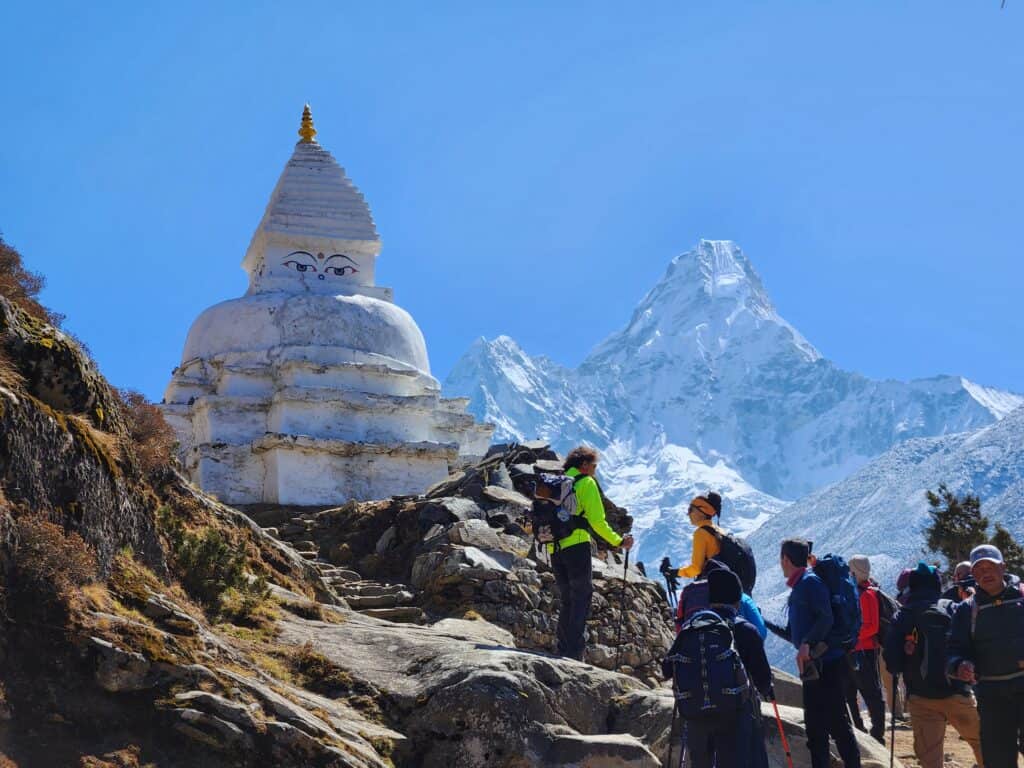
Gloves
You need to carry thick gloves for your hand. You can also use gloves of fleece that are lighter and warm too. In summer, you do not need gloves in the lower areas during the daytime. But, you may need them during the night.
As you go higher, you will need them not only in the morning and night but also in the daytime. You should carry gloves regardless of whether you are trekking in summer or winter.
Hats and Caps
You never know when the weather is going to change. The first few days, you may have to walk during mid-noon. Headwear will protect you from harsh suntans.
You would have to carry hats not only to protect yourself from the sun but also from the rain. The woolen cap is one of the basic things you have to carry during your trek. You would need to protect your head from the extreme cold.
Negligence can lead to headaches or dizziness. You may catch a cold or get into some other problems.
Here is a short list of items mentioned above:
- Rainproof jacket and a trouser
- Light windcheater
- Two pairs of trekking trousers
- Two full sleeves shirts
- Woolen shirts and sweaters
- Fleece /best down jacket
- Fleece trousers
- Sports bra (for women)
- Yoga pants/ Thermal wears for nights
- Lightweight walking boots
- Slippers
- 2 pair of thick and 2 pairs of thin socks
- Thick gloves
- Woolen caps
- Underwear, hankies, and swimsuit

Sunscreens and moisturizers
Trekking and hiking are the best ways to get close to nature. You will soak up some rays during your trek. Hiking for a whole day exposed to direct sun rays without your skin care will ruin your skin.
Your skin will get exposed to extreme temperature so, it’s wise to walk prepared.
It is advised to use sunscreen or any other skin protection as per your choice.
Where to Buy equipment for trekking in Nepal?
You can easily buy all gear and equipment in Kathmandu and Pokhara itself. You can buy quality products in many shops around Thamel, which is a tourist area in Kathmandu.
If you are trekking through an agency, it will provide a jacket for trekking free of cost. We would recommend you to carry a backpack instead of a suitcase during your trek.
Trekking Seasons
The months of October and November are the best seasons to trek in Nepal. This is the season when Nepal gets the highest number of tourists. The high mountains are still cold but the lower lands are warm during this season.
You can pack some light clothes if you are trekking in this season. February and April are spring times in Nepal. The lower elevations are warm at this time of the year as well. But, you should be well prepared for the high elevations.
September and December are cold seasons in Nepal. Lower elevations are also cold. Mornings and nights are extremely cold. If you are trekking during winter, you should carry extra woolen clothes. You also should wear an extra layer of clothes.
December is dry, hence, trekking may be easier but the cold is extreme.
Thus, trekking in Nepal will be the most beautiful experience if you are prepared with the best gear and wear.
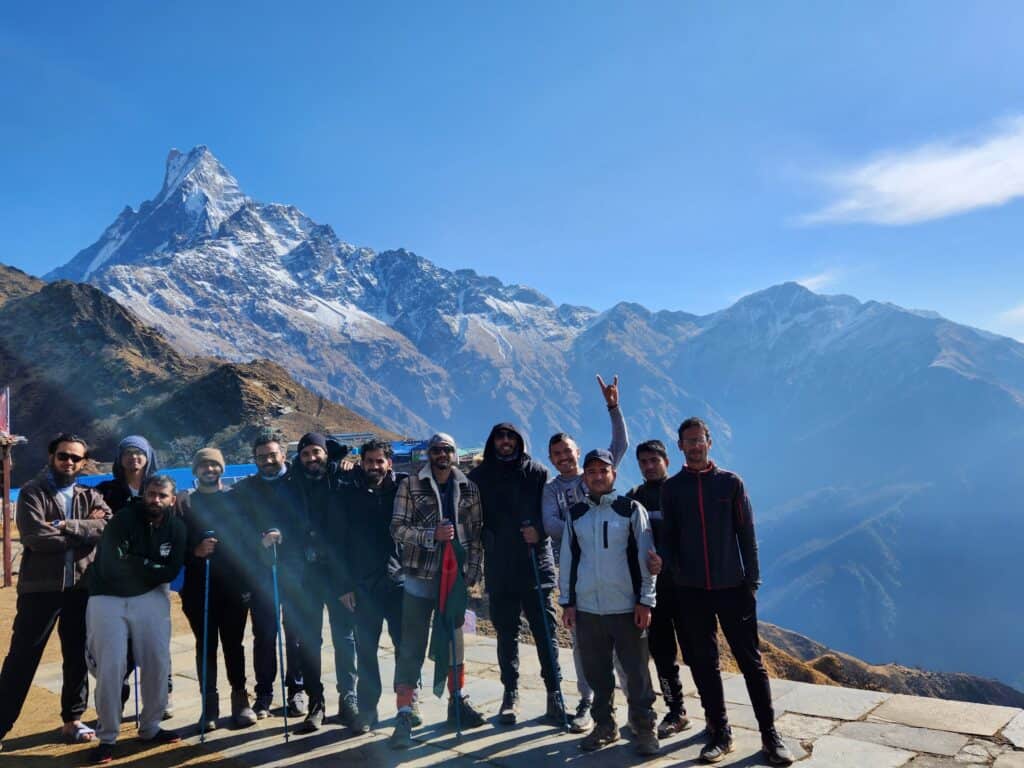
Some additional points to ensure you pack right for your trekking adventure in Nepal
Layering: Reducing the Weight of Your Bag
Layering is essential while trekking in Nepal, where weather conditions can change rapidly. Instead of carrying all your clothes and making your bag heavy, you can opt for layers.
The base layer, typically made of moisture-wicking fabric, helps regulate body temperature and keeps sweat away from the skin. The mid-layer provides insulation to retain body heat, while the outer layer, like a waterproof and breathable jacket, protects you from wind and rain. By packing appropriate layers, you can stay comfortable in both cold mornings and warmer afternoons.
Rain Gear
While it might not always rain during your trek in Nepal, there is a chance of occasional rain, even if you are trekking during peak seasons like spring and autumn. However, if you are trekking during the monsoon season, rain gear is indispensable.
A high-quality rain jacket and rain pants with sealed seams and waterproof materials will keep you dry when facing heavy downpours. Don’t forget to carry a waterproof cover for your backpack to ensure your belongings remain dry.
Choosing the Right Sleeping Bag for Higher Altitude
Nights in the teahouses during the trek can be extremely cold, especially if you are trekking above 3500 meters. Consider carrying a proper sleeping bag that is graded according to the trek you are doing. Make sure you contact your tour operator and ask them if the sleeping bag you are bringing is suitable. Additionally, get a liner that provides extra warmth for those chilly teahouse nights since teahouse rooms’ temperatures are similar to the outside temperature.
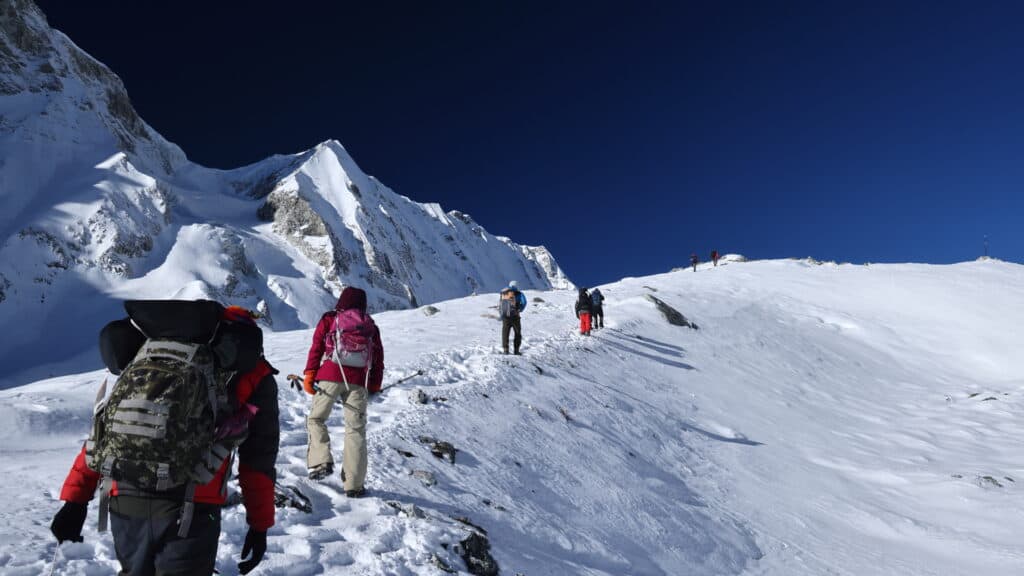
Socks and Undergarments
Don’t try to save money while buying these important items. Invest in proper moisture wicking and breathable socks to prevent blisters and keep your feet dry during long trekking days in Nepal.
Suitable undergarments, such as seamless and quick-drying options, help reduce chafing and discomfort.
Footwear Accessories
Gaiters are crucial for protecting your ankles and lower legs from dirt, rocks, and leeches. Additionally, during winter treks, they help keep the snow away and prevent it from getting inside your shoes.
For higher altitude passes in Nepal that go above 5000 meters, it can be icy or snowy. So, crampons or spikes for shoes that fit securely on your boots offer much-needed traction and stability.
Trekking Poles
Trekking poles are not mandatory gear but they can be one of your best friends, especially while descending on the trail. These poles greatly assist your balance, stability and reduce strain on your knees and legs during descents. Adjustable and collapsible poles are convenient for different terrains and can be easily stowed in your backpack when not in use.
Choosing the Right Comfortable Backpack
The backpack you choose plays an important role while trekking in Nepal or any other destination. A comfortable bag can significantly enhance your hiking experience. Look for a backpack with adequate capacity to carry your gear comfortably and ensure it has features like padded shoulder straps, a hip belt and back ventilation to distribute weight evenly and reduce strain. Additionally, make sure it has a waterproof cover to protect your belongings in case of rain.
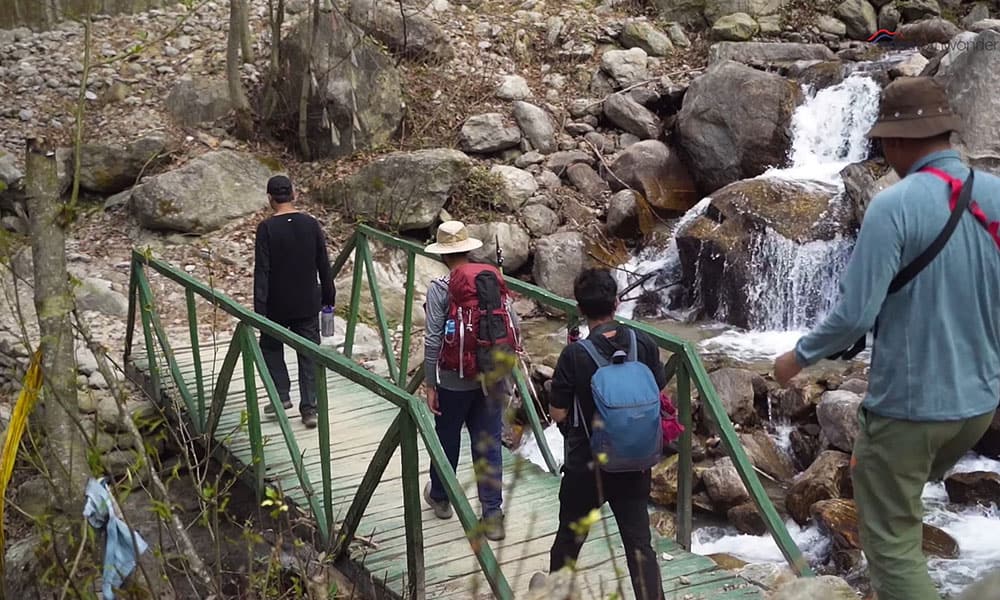
Accessories and Extras
Small things can make a big difference during your trekking in Nepal, so make sure you pack these accessories right.
- Sunglasses with UV protection shield your eyes from harsh sunlight and snow glare.
- Buffs and neck gaiters can be versatile accessories to protect your face from dust, wind, and cold temperatures.
- A basic first aid kit.
- A charger for your electronic devices and a power bank for those days on the trek where electricity is not always reliable.

Summary
During your trekking in Nepal it is essential to be well prepared in advance with the right clothing and gear, considering the country’s diverse and unpredictable weather conditions.
Layering becomes crucial to adapt to varying temperatures throughout the day.
Choosing suitable footwear such as waterproof trekking boots that are broken in, ensures comfort and safety.
Properly caring for gear and bringing the right sleeping bag for higher altitudes are also essential for a comfortable sleep.
By being mindful of these considerations and packing appropriately, you can surely have a safe and enjoyable trekking experience in Nepal.
I have tried to include everything a trekker should pack while trekking in Nepal for smooth trip, but if there is anything missing, please feel free to comment below and I will try to add it in my next update.
Enjoy your Trekking in Nepal!
Want more information? Send us your query, and our experts will get back to you within 24 hrs.
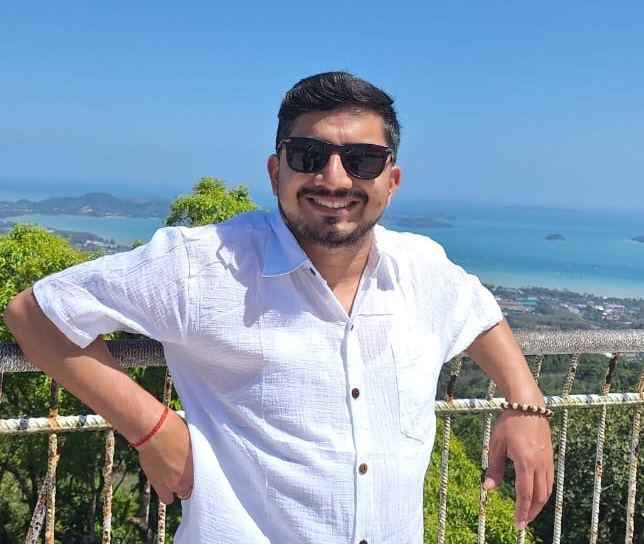
Madhav started working as a porter in 2001 and then moved on to work as a trekking guide. After working in the trekking and tourism industry for eight years, he co-founded Mosaic Adventure in 2009.
Madhav has trekked to most of the trekking destinations in Nepal, including Everest Base Camp Trek, Annapurna Base Camp, Annapurna Circuit Trek, Poon Hill Trek, Jomsom Muktinath Trek, Indigenous Peoples Trek, Langtang Valley Trek, Mardi Himal Trek, and all of the day hikes around Kathmandu.
He has also extensively traveled to other countries such as Australia, the USA, the UK, France, Hong Kong, Japan, China, the Philippines, the UAE, Saudi Arabia, Bahrain, Thailand, Turkey, and India. Madhav is the one who answers most of your questions about trekking and tours and helps to plan your trip by giving a personal touch.

